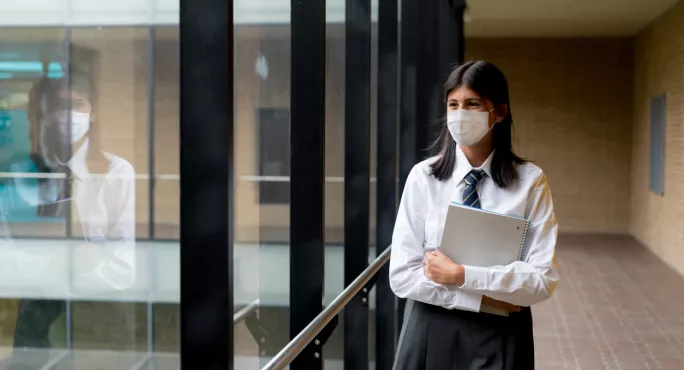Covid rates among secondary school-aged children are on the rise again after a decline at the end of November, new data shows.
And the Years 7 to 11 age group is top in the coronavirus infection table, the latest data from the Office for National Statistics shows.
The percentage of secondary school children testing positive for Covid went up from 1.87 per cent on 28 November to 2.07 per cent on 5 December.
Revealed: School rapid Covid test areas in South East
News: Covid hotspot teachers urged to get tested this weekend
School leaders: Why did North miss out on rapid Covid tests?
Younger children also showed a rise in Covid infections: of those aged from 2 years old to school Year 6, 0.98 per cent were positive on 28 November, rising to 1.07 per cent on 5 December.
NEU teaching union joint general secretary Kevin Courtney said: “The latest ONS coronavirus survey figures should be very worrying to the government - especially in the run-up to Christmas. They show that cases are again rising in secondary and primary schools.”
Coronavirus: Call for mass testing in primary schools
He pointed out that secondary student infections were now “significantly higher than the university student age group, now returning home with such care”.
Mr Courtney added: “The only other age group with rising cases is 35 to 49 year-olds - and that is the age group with most parents of school-aged children.”
The data shows this age group saw infection rates rise from 0.94 to 1.00 per cent.
The ONS provides an estimated percentage of the population in each age group testing positive for Covid on nose and throat swabs.
Other age groups show declining infections: older teenagers and young adults (Year 12 to 24 year-olds), 25 to 34 year-olds, and 50 to 69 yea- olds.
Covid rates have been declining in all regions of England apart from London, but the ONS report states that there are signs that rates may have increased in the East of England.
“The government should commit now to a rollout of mass testing across the country, not just in the South East,” Mr Courtney said.
“The testing should also happen in primary schools.
“We predict that, when this testing happens, many children will have to be sent home on public health advice. This will lead in practice to a chaotic closure in the last week of term.”
